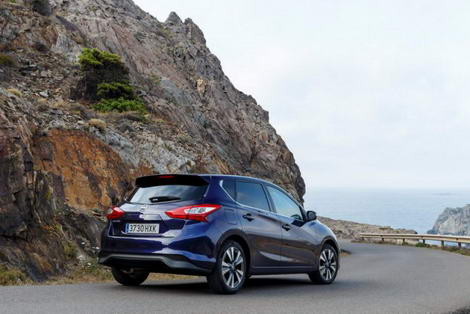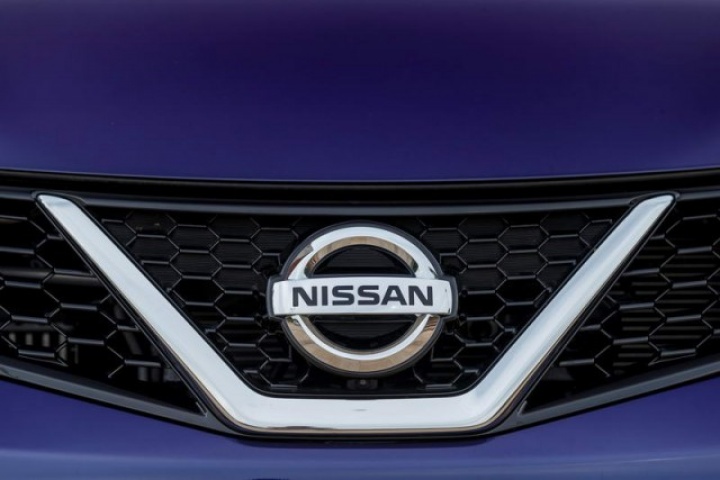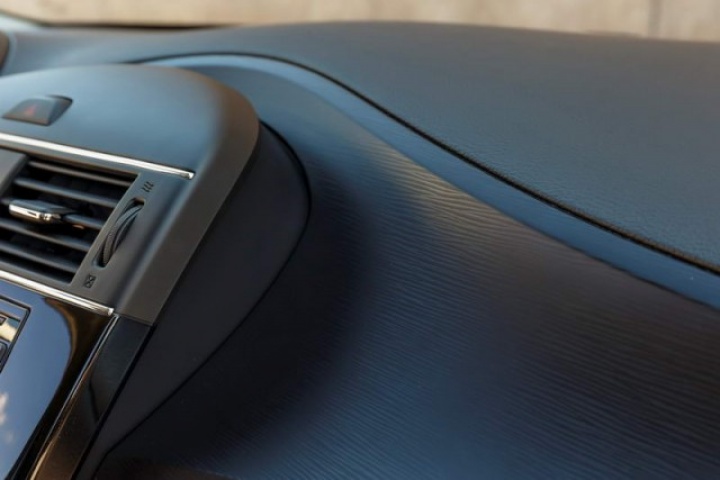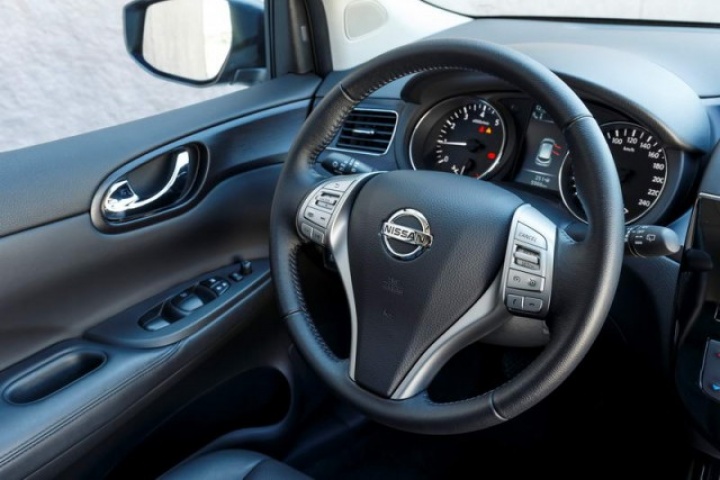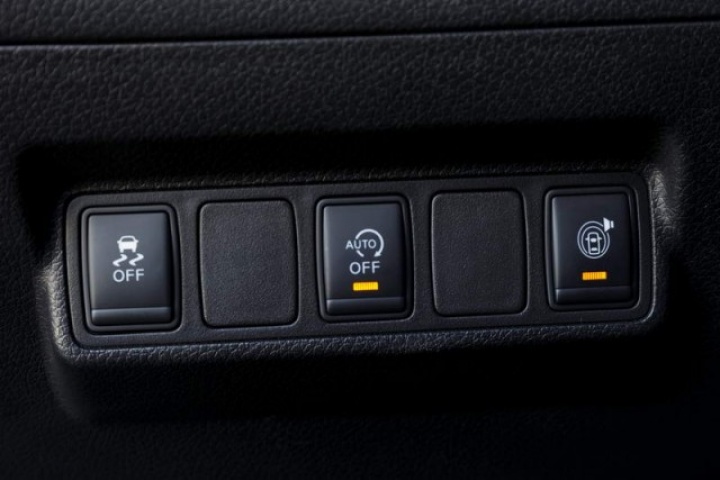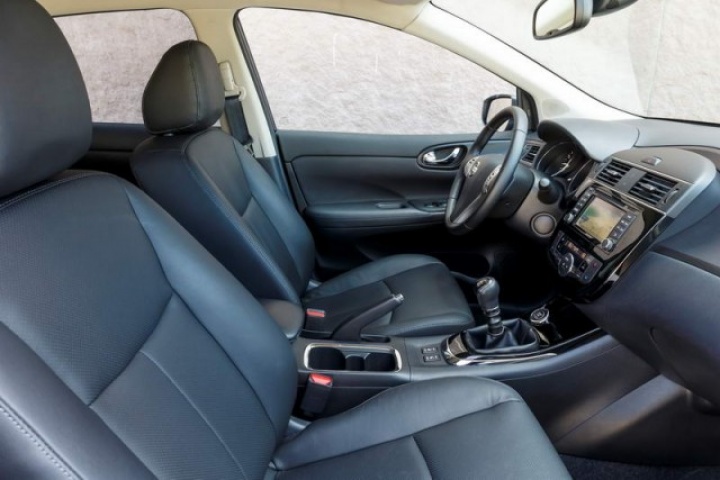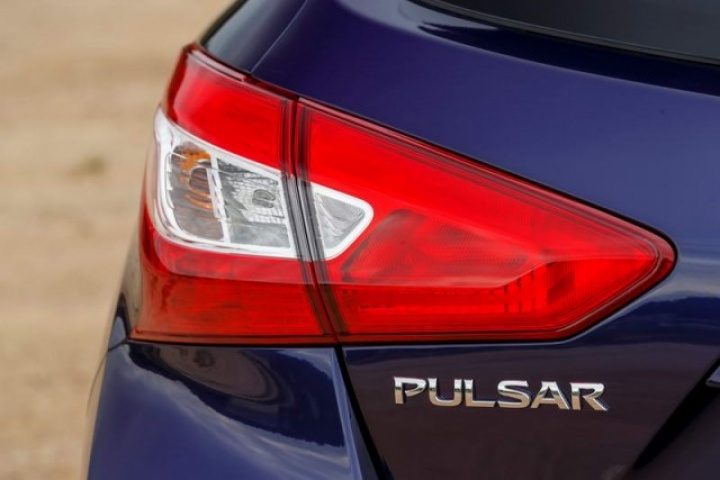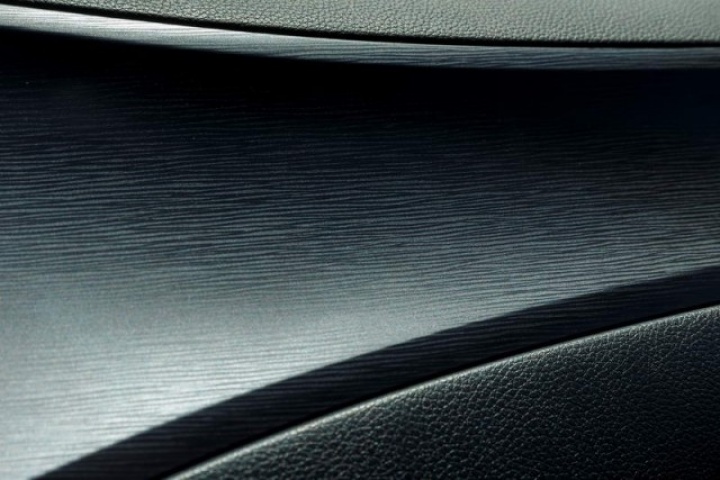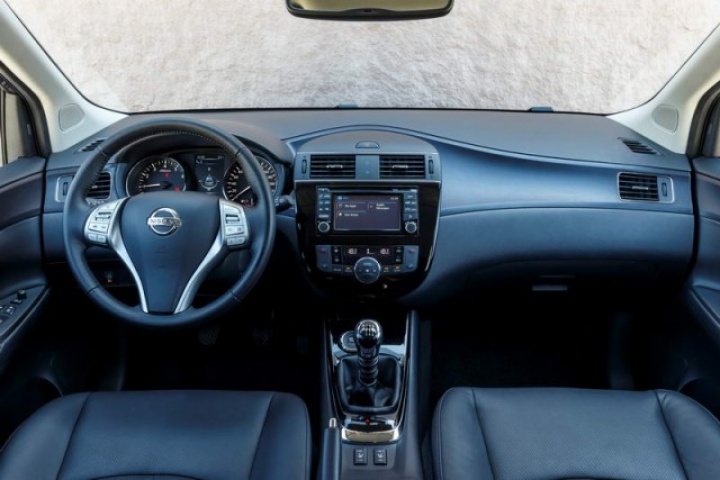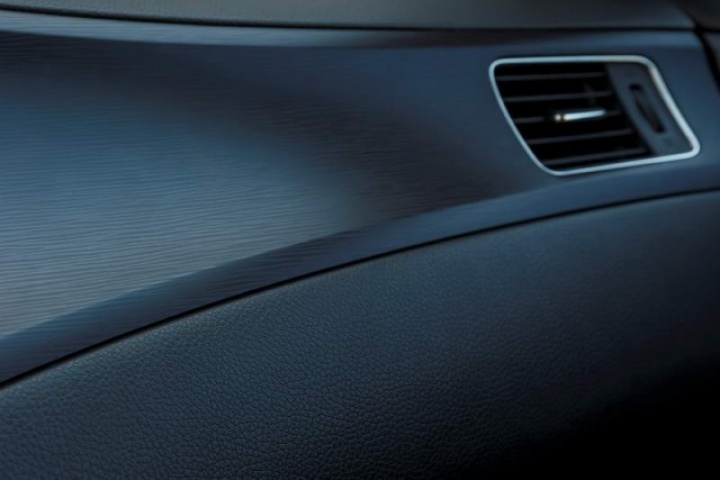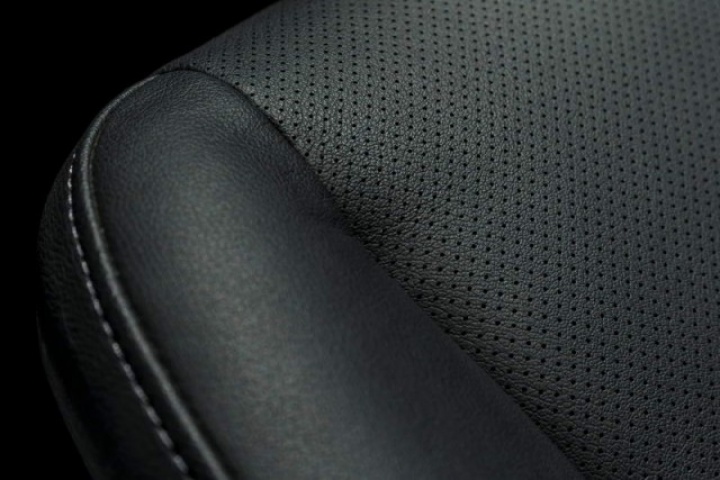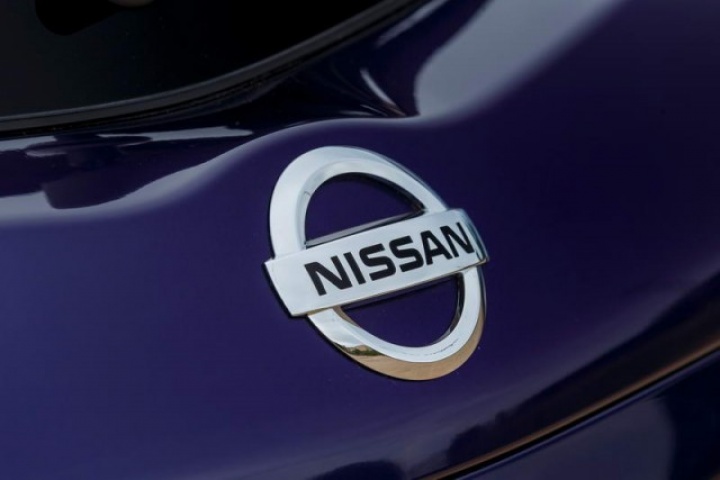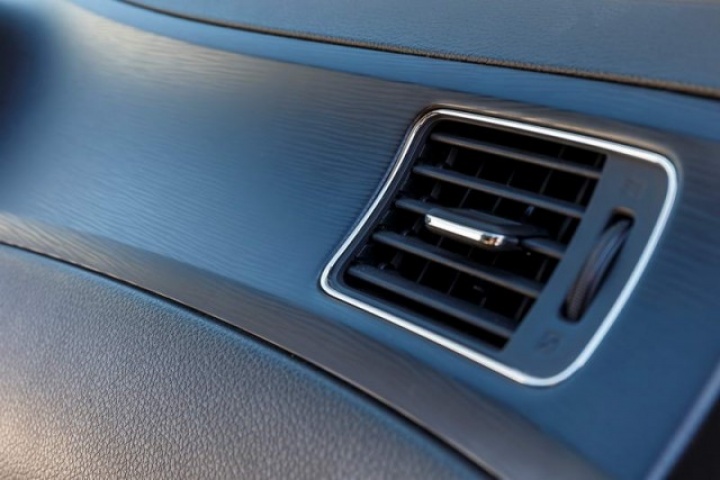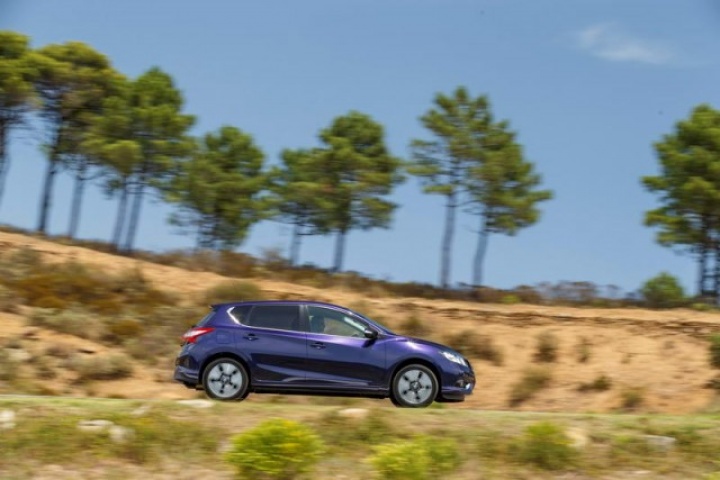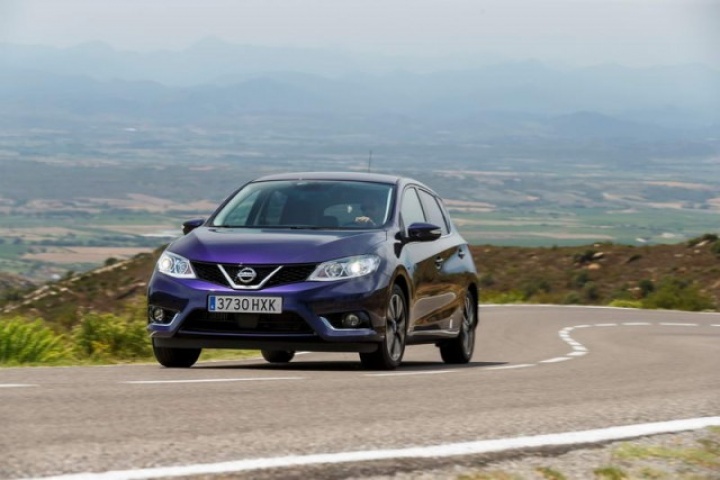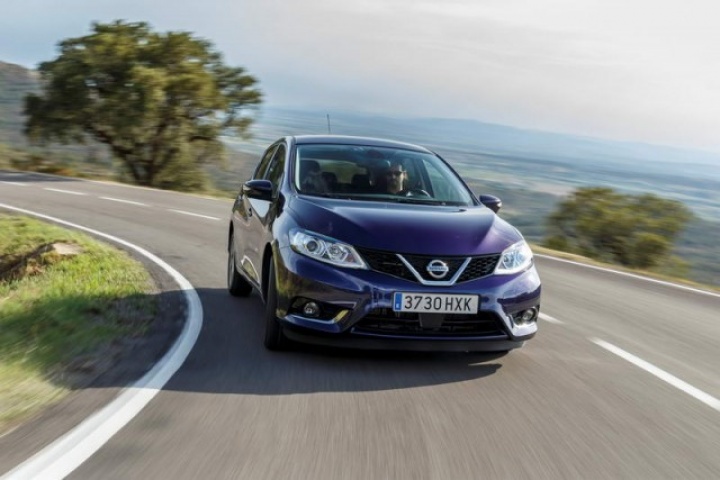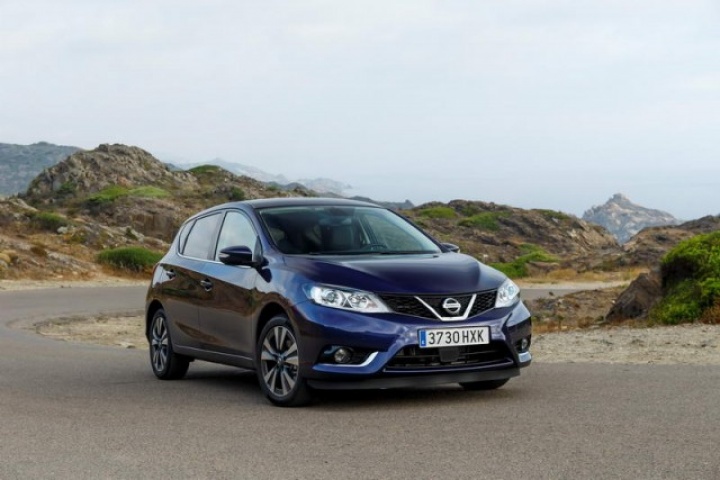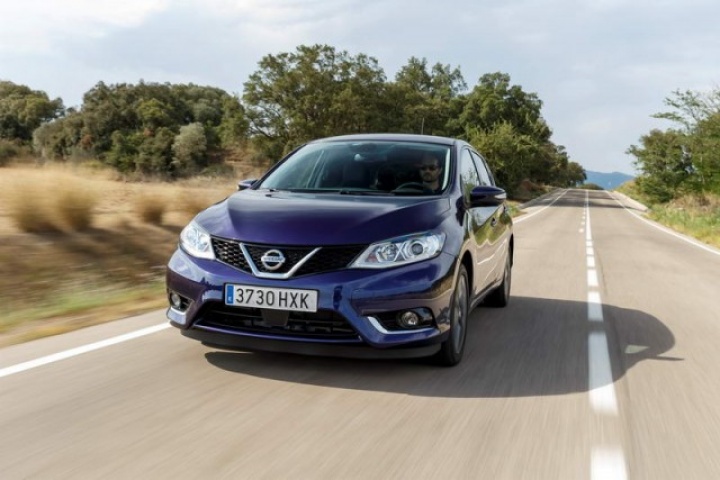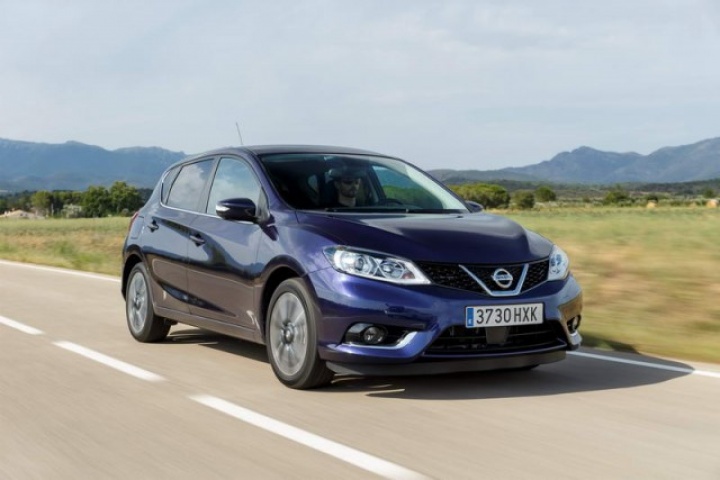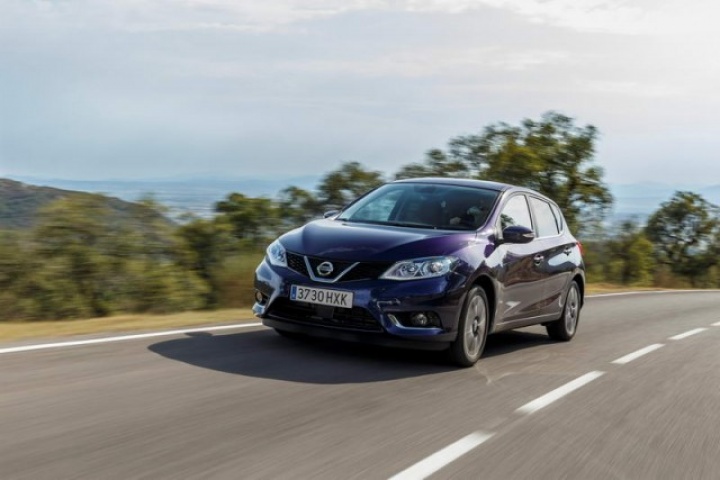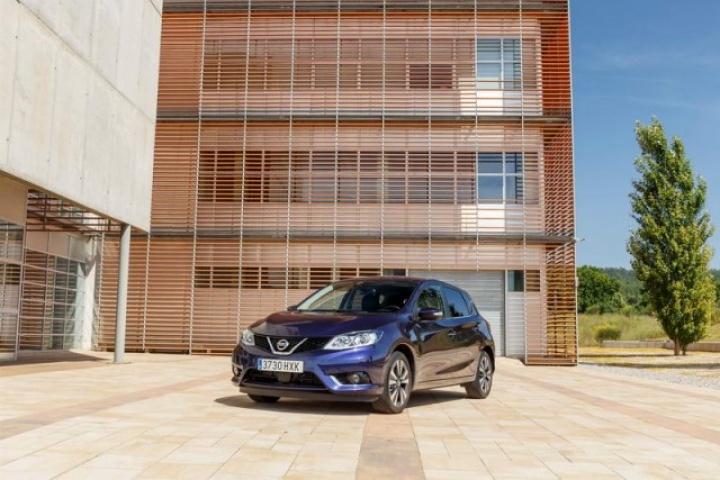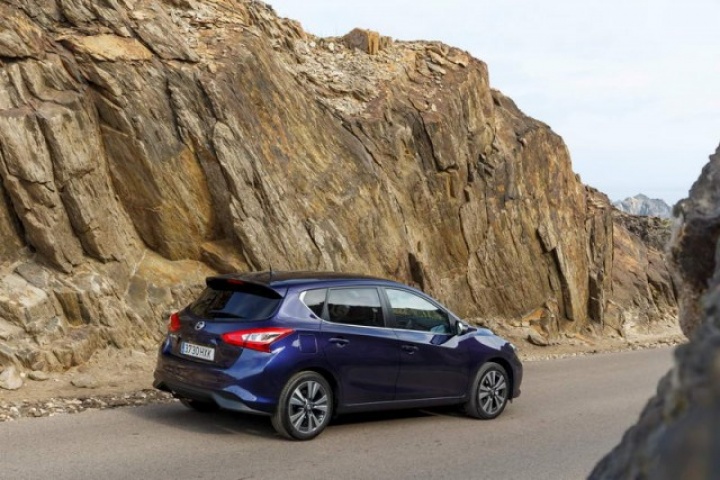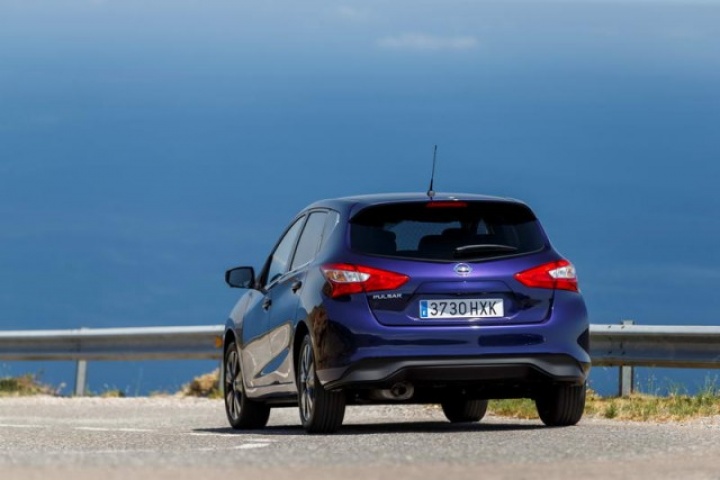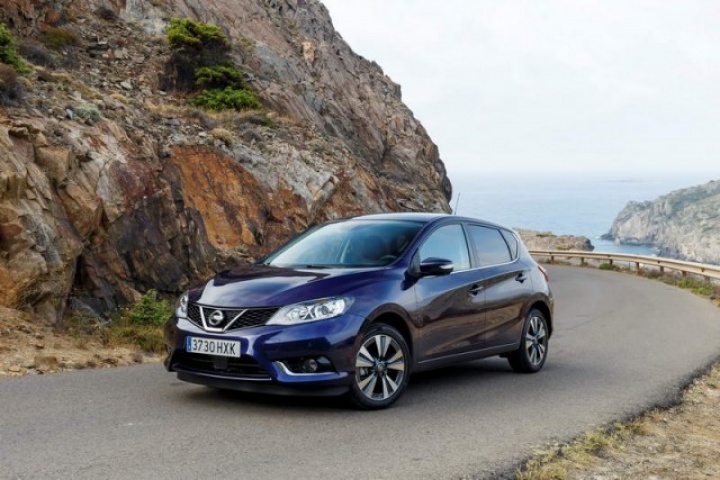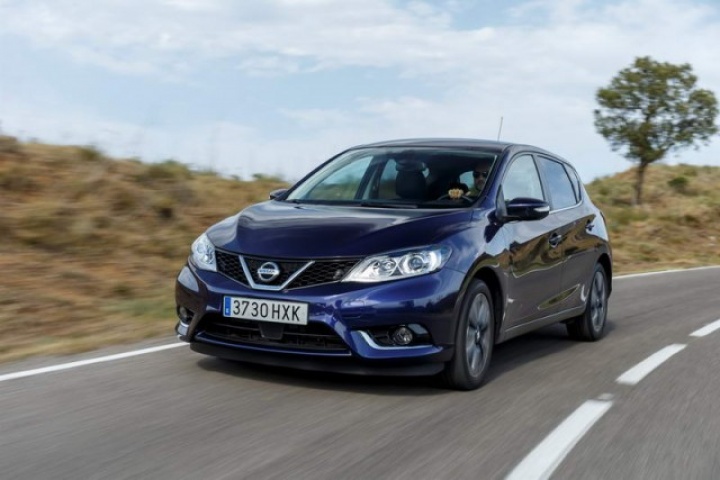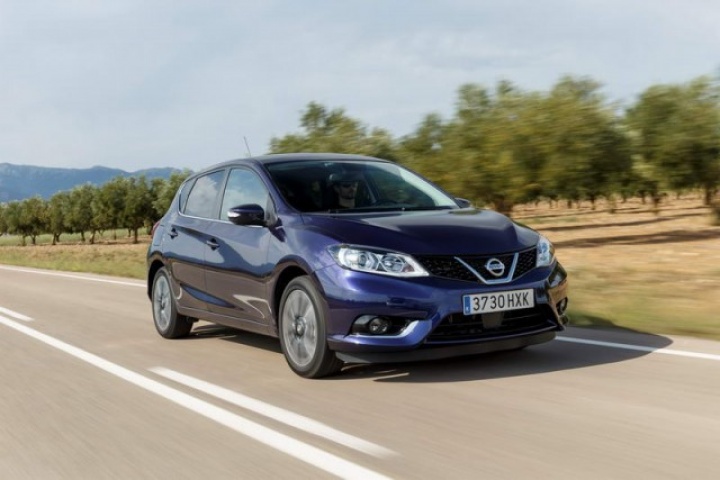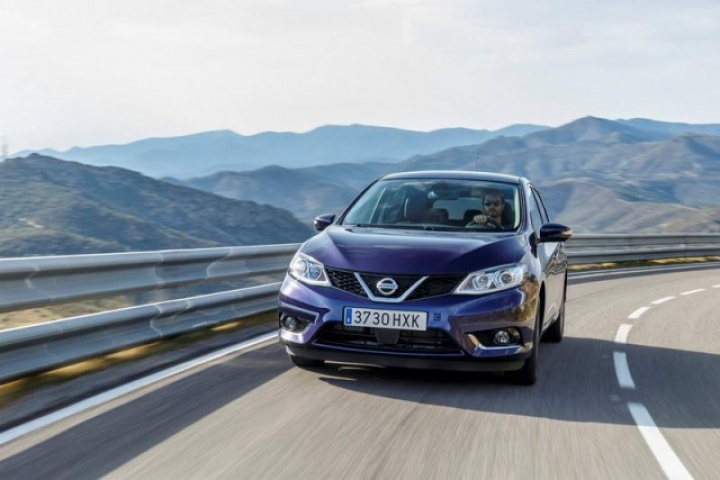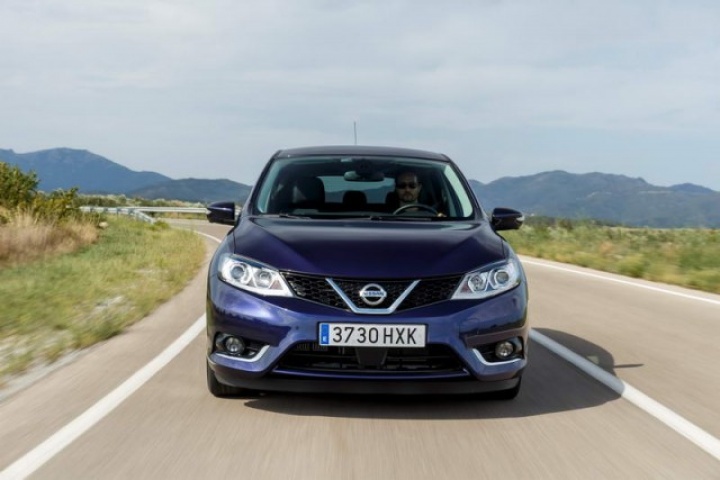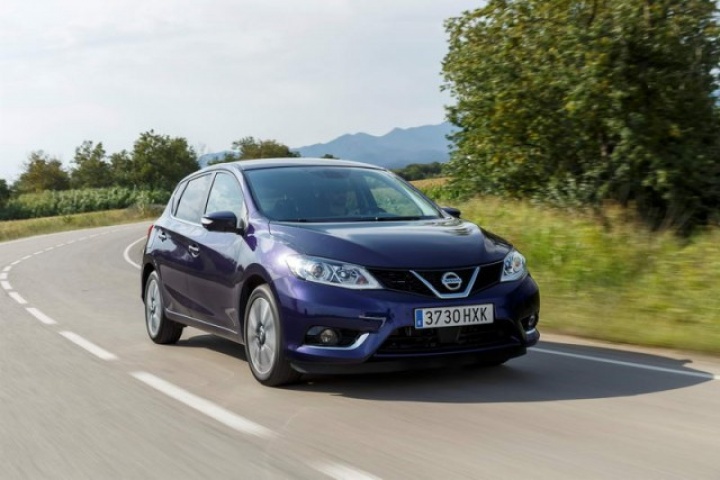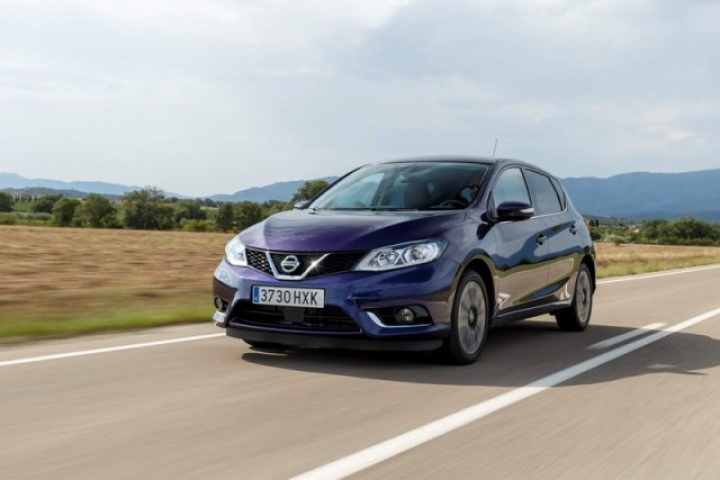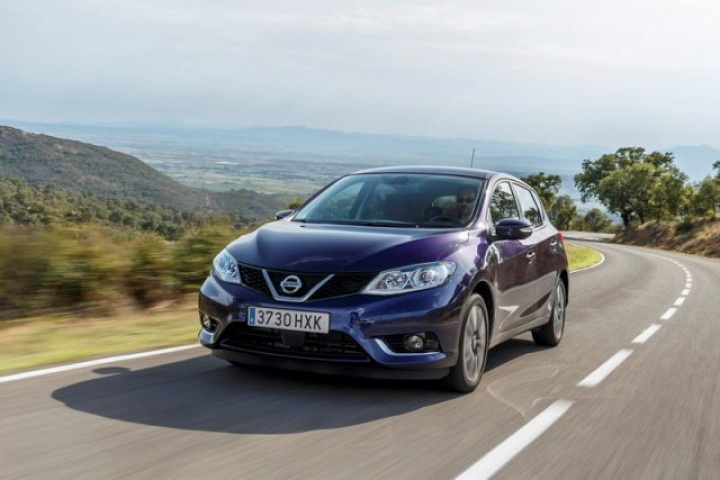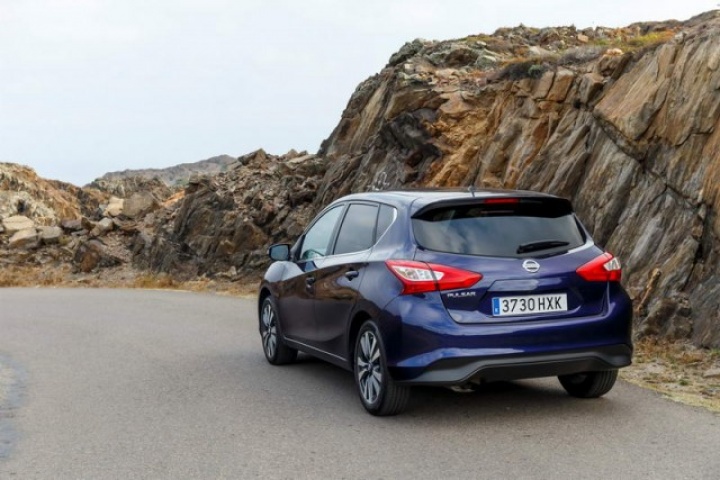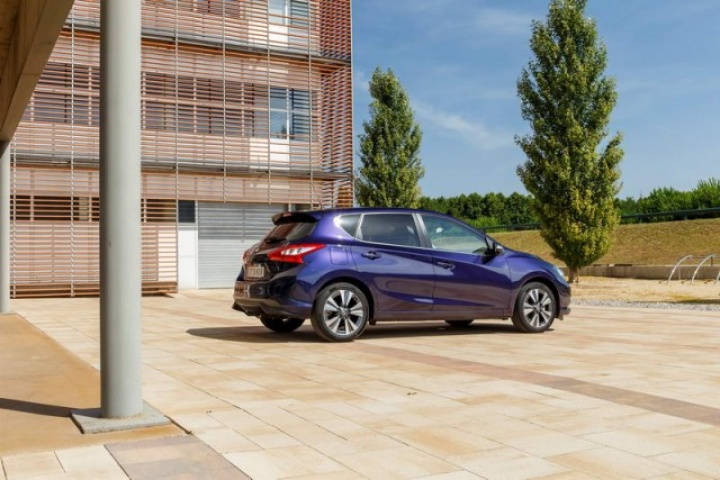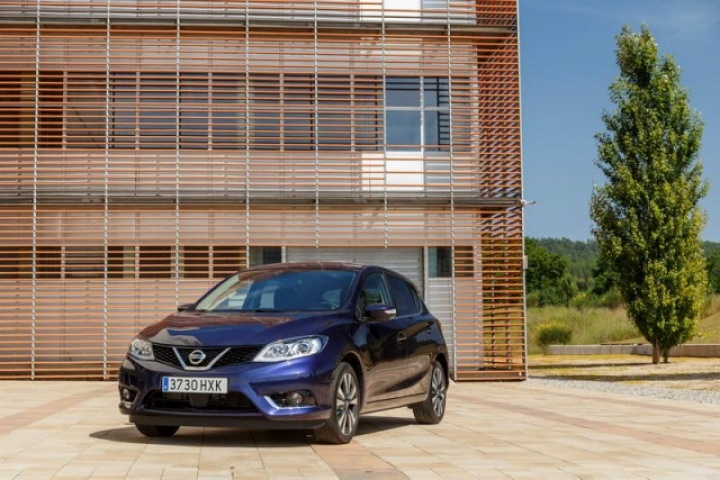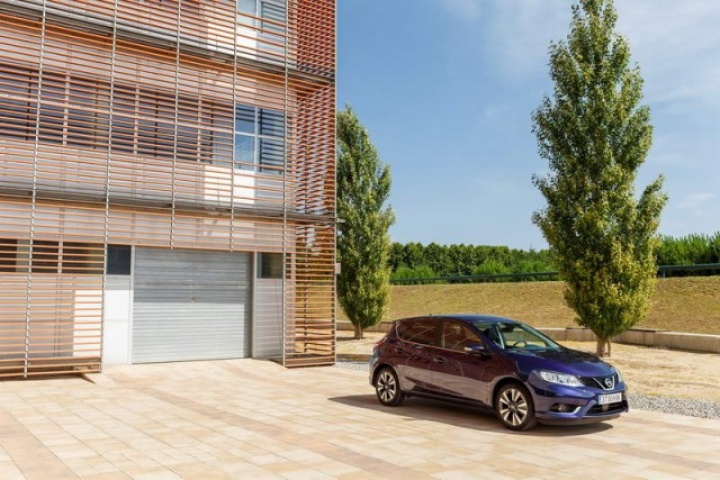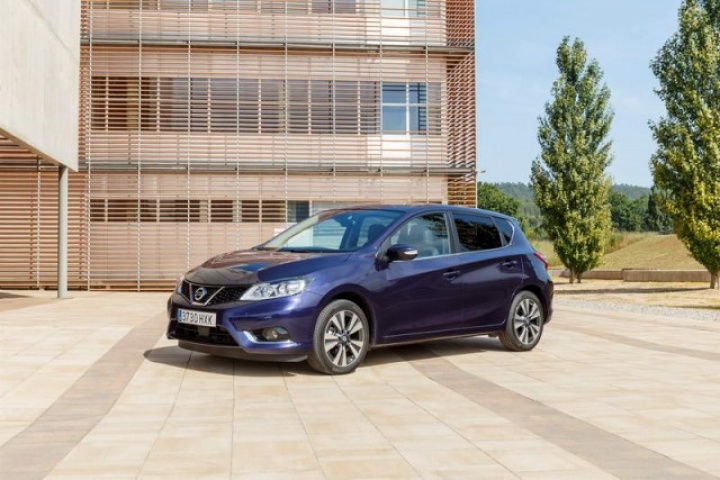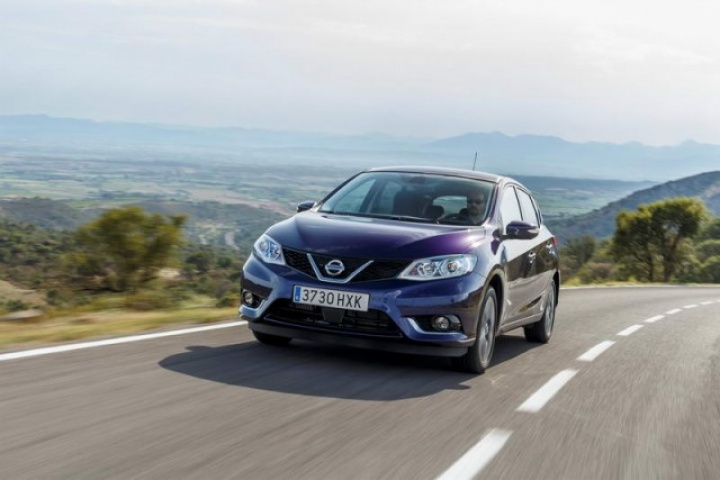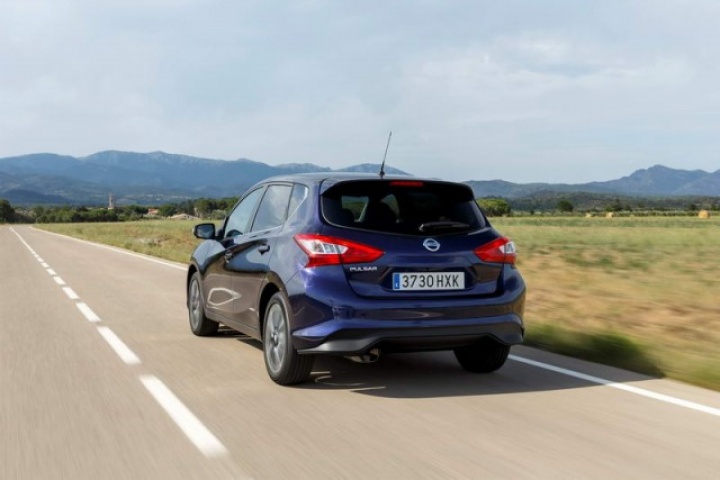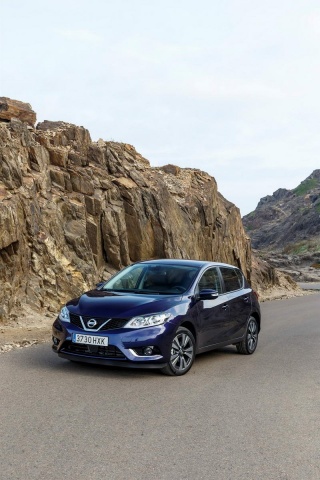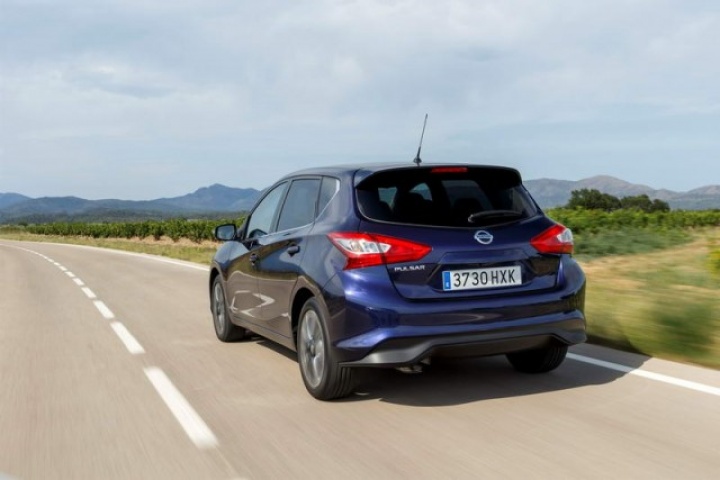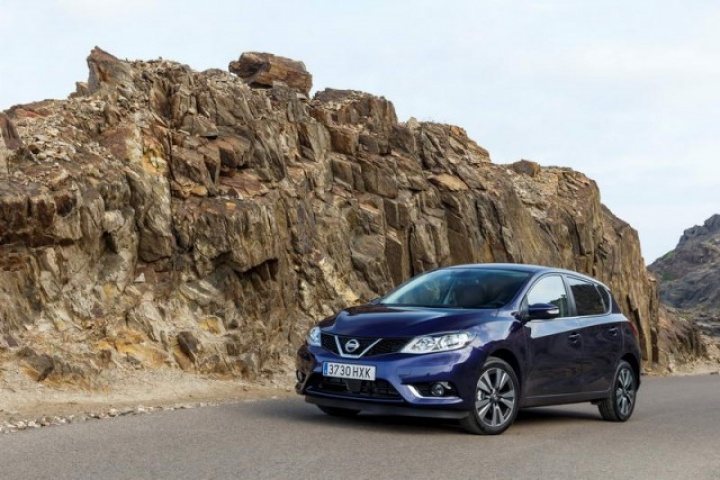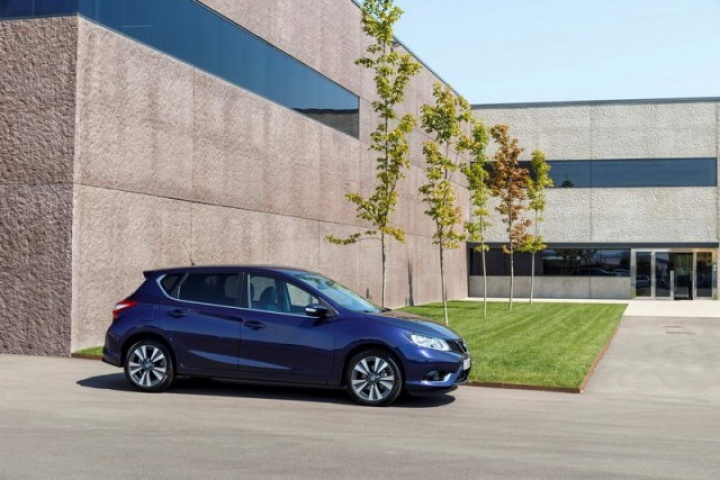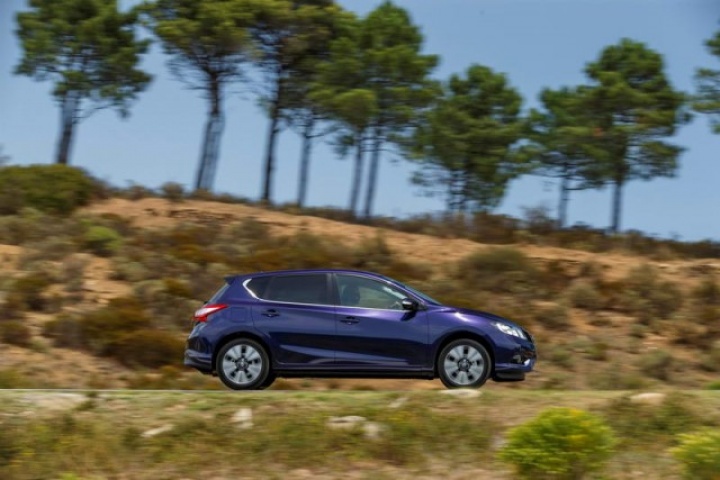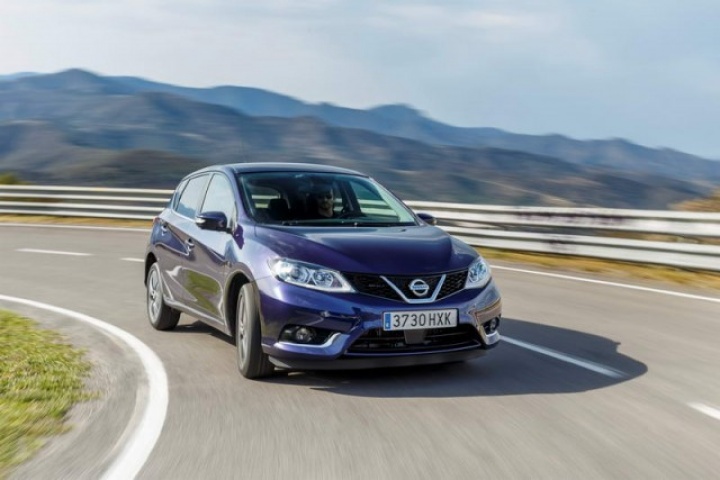Overall rating: 3.5/5
Breath-taking, fun to drive, class leading dynamics. None of these words apply to the new Nissan Pulsar, but spacious, practical and comfortable do and most buyers prefer the latter list to the former. The Pulsar is not about winning awards, but about knowing your customers - and it scores well there.
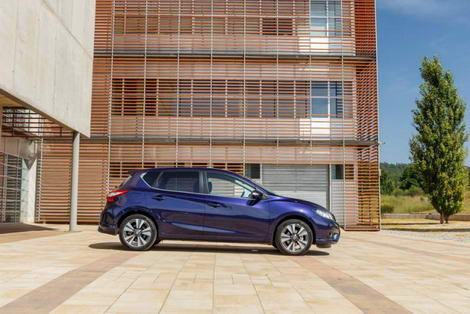
In the metal 3/5
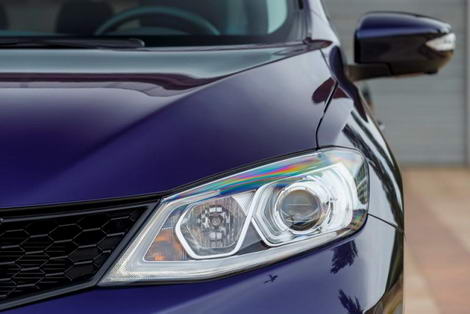
When you consider how innovative Nissan has been in the past with the likes of the Qashqai and Juke, the styling of the Pulsar is more than a little disappointing. There is a hint of 'styling by numbers' to the look with the new corporate face having to be included and the desire to squeeze as much space between the wheels as possible - leaving a slab-sided profile not too dissimilar to that of the Lexus CT 200h; itself not renowned for paradigm shifting design. The Nissan does look well in light colours and with the right specification - there was a white car with black wheels and detailing at the international launch that gave us an insight into how a future Nismo-badged model may look - but beyond that the design is innocuous and inoffensive. Very unlike Nissan of late.
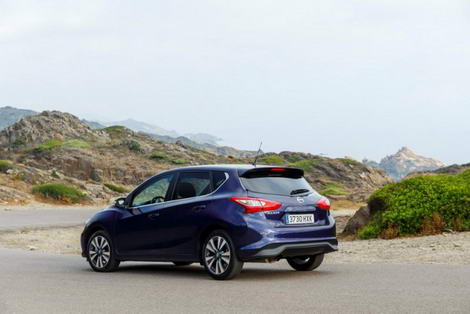
The interior is recognisably Nissan. Anyone who has sat in a Qashqai/X-Trail/Note of late will feel instantly at home, even more so if they sit in the back. At 2,700mm, the space between the wheels is longer than that of the Skoda Octavia and it is put to good use with ample legroom all around, particularly in the back. Despite the wheelbase the Pulsar is actually shorter overall than some of its chief rivals, which may lead you to believe Nissan has had to sacrifice some boot space, but at 385 litres (rear seats in use) the Pulsar actually beats the likes of the Kia cee'd, Hyundai i30 and SEAT Leon.
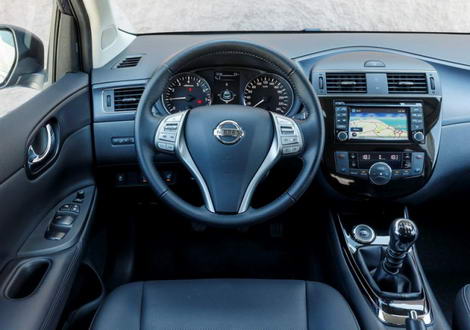
Driving it 3/5
In the motoring world, describing a car as an 'appliance' is akin to some describing an online journalist as a 'blogger'; it is meant to belittle and deride the car, but there is another way of looking at an appliance - it has a job to do and it does it well. Your fridge keeps things cold, your washing machine washes your clothes and your car gets you from A to B and as much as we (journalists and car enthusiasts in general) would like all of our cars to have the verve and emotion of something like an Alfa Romeo the simple fact is we are in the minority. Most people just want a car that starts every morning, is comfortable to drive and gets them to where they are going without any fuss - and on that score the Pulsar ticks all the boxes.
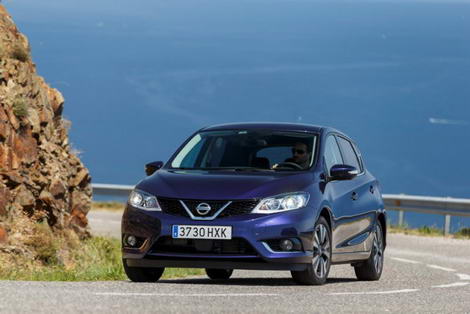
The 1.5-litre dCi diesel engine is one we are familiar with from various Renault and Nissan applications, but in the Pulsar it is quieter than before with just a distant, disconnected rumble somewhere off in the distance. The chassis is set up to be safe and competent, whiling away the time on the motorway, though the one chink in its armour is its reaction to broken surfaces or speed bumps, which are met with a bang and clatter that jars against the otherwise quiet ride. Wind noise from the large door mirrors does present itself at motorway speeds and a whistle from the turbocharger on the 1.2-litre DiG-T petrol model is evident at lower speeds, but these noises are no worse than you will find in some German-made alternatives.
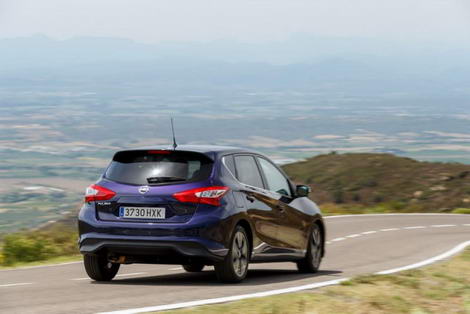
The biggest problem we have with how the Pulsar drives is the gearing. In an effort to improve fuel economy the spacing of the six-speed transmission is quite far, meaning you find yourself having to drop a cog at the first sign of an incline or when you need to accelerate up to motorway speed. This is not an issue we have noticed in previous applications of the 110hp diesel unit.
What you get for your money 4/5
Starting at €19,995, the Pulsar will be offered in three familiar specifications - XE, SV and SVE. All models will come fitted with air conditioning, cruise control, Bluetooth, a five-inch touchscreen and electric windows all-round. A tyre pressure monitoring system, six airbags and stop-start are also all fitted as standard across the range.
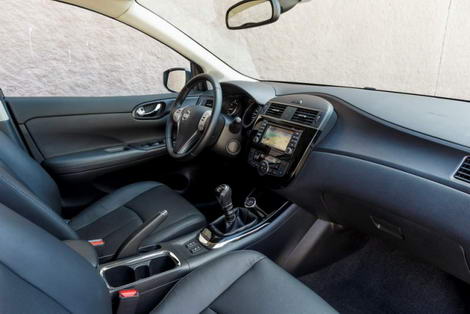
SV cars, which start from €21,395, add such niceties as 16-inch alloy wheels, front fog lights, dual-zone climate control and push button start, while range topping SVE (€24,195) adds LED headlights, Nissan's Safety Shield and forward emergency braking. Alloys also get pumped up to 17-inch units and privacy glass is added to the rear windows.
To get into a diesel (which Nissan suspects most buyers will) you have to stump up at least €21,595.
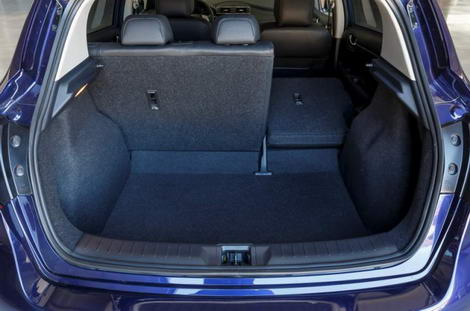
Worth Noting
While the 1.5-litre dCi diesel will undoubtedly be the biggest seller in Ireland the 1.2-litre DiG-T petrol engine has its merit. It's quieter, more powerful and in the real world (where you find yourself having to work the gears in the diesel to make decent progress) almost as frugal. At 114g/km it cannot hope to match the diesel's 94g/km rating, but the difference in tax is only €20 per annum, and unless you are doing the mileage to make the most of the diesel engine's economy you will be a long time repaying the €1,600 price difference. The petrol unit is also the only engine available with Nissan's CVT X-Tronic automatic transmission.
Summary
On an emotional level there is little to recommend the Nissan Pulsar, but for most buyers cars are not emotional things to begin with. The second biggest purchase in one's life is usually decided by the head rather than the heart and in pure figures the Pulsar stacks up. It is well-priced, comes with a decent level of equipment, is comfortable no matter what seat you are in and has a decent boot. Sure, you are unlikely to drive it just for the sake of it, but it will start every morning and not cost the earth to run, and for the vast majority those qualities rank higher than class leading dynamics and 'personality.'
